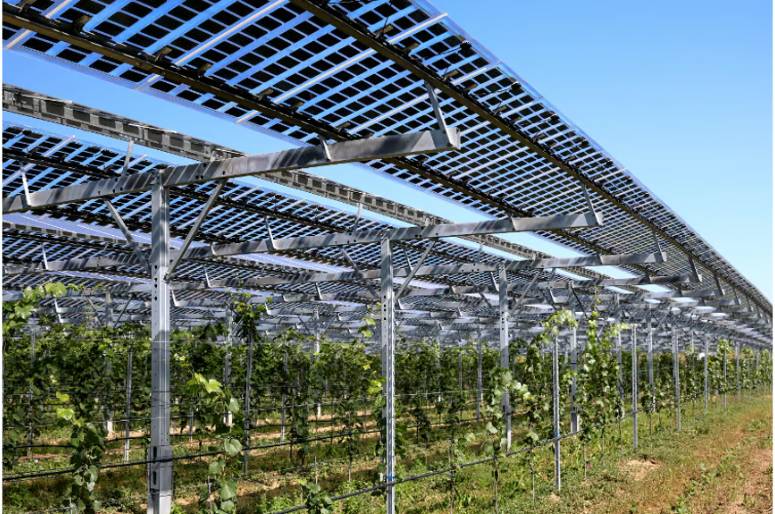Use of bifacial modules and trackers for agrivoltaic systems can really help in effective dual-use of land.

Key Takeaways
IEA PVPS report under Task 13 recommends how to optimize bifacial solar PV tracking systems
It suggests that the ability of trackers to respond to rare, extreme weather conditions should be standardized
A major challenge will be how to reduce the design complexity and variations for agrivoltaic applications
The International Energy Agency’s Photovoltaic Power Systems Programme (IEA-PVPS) in its latest report under Task 13 explores the best practices and innovations in the deployment of bifacial solar PV tracking systems.
Currently dominating the utility scale PV market globally, PV systems using bifacial modules and single-axis trackers still have some technology-specific and site-specific factors that need to be investigated. This is a must in order to optimize the performance of these PV tracking systems, according to the analysts.
Referring to the ITRPV 2024 report, IEA PVPS said that more than 90% of soalr cells made in 2024 were bifacial and about 95% modules used bifacial cells, with 62% made as bifacial modules and the rest as monofacial modules.
At the same time, over 60% of the market share of systems installed use single-axis trackers, according to the report that surveyed 16 tracker companies with around 87% global market share from 2012 to 2021, and owners and operators of more than 13 GW of PV systems.
Typical tracker gains of 15% to 20% and bifacial gains of 2% to 10% are additive and these systems provide the lowest levelized cost of electricity in about 90% of the world, according to the analysts.
The report stresses that the tracker companies are innovating to make their solutions applicable to a wide range of site conditions, including sloping topography. Some of the recent innovations focus on active protection of modules from wind, hail, snow and even flooding. They are also experimenting with novel ways to help improve power conversion during cloudy conditions with diffuse stow strategies. One of the interesting applications of bifacial tracking systems are agrivoltaic systems.
Among the factors that still need to be improved include tracking algorithms since tracking companies avoid sharing details about how their specialized tracking algorithms work. This makes it difficult to evaluate their performance and assess if these add sufficient value to the bifacial technology, or to a particular project.
The report recommends developers to deploy multiple sets of trackers each running different algorithms at a site for a test period to decide which one to use for the life of the plant.
Though early studies have shown some promising results, authors are not sure if the use of albedo enhancers such as geosynthetics will ever be economically feasible.
Among other recommendations, the report writers suggest the ability of trackers to respond to rare, extreme weather conditions should be standardized. Yield prediction models for bifacial tracked systems need to be improved too.
They add that a major challenge will be how to reduce the design complexity and variations for agrivoltaic applications to take advantage of standardization, high throughput manufacturing, and global supply chains to lower the cost. This will be difficult since it appears that every crop and site may present unique constraints for an agrivoltaic system, making it difficult to create standard system designs and operational strategies
“The use of bifacial modules and trackers for agrivoltaic systems is especially exciting because if it can be shown to be feasible, it could make available a vast amount of land for renewable energy generation and help many smaller countries benefit from PV energy without sacrificing land for agriculture,” according to the writers.